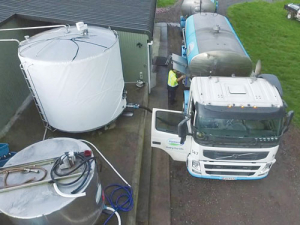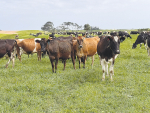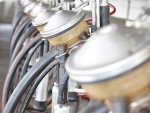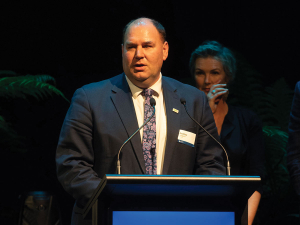If your milk cooling system is not capable of meeting the new milk cooling regulations, you may need secondary cooling.
This may be costly and have a long payback period but may come with the benefit of heat recovery, enabling you to save on hot water costs.
Carefully evaluate all options to ensure the system is fit for purpose without over-capitalising.
Cooling towers
Cooling towers can be very effective especially in areas of low humidity. Water can be cooled to within 5°C of the wet bulb temperature in a properly designed plant.
The most effective plants are fan forced and turn over a large store of water every hour. They operate overnight to cool a large volume of water, usually 4.5 times the volume of the daily milk yield.
Cooling towers reduce cooling water temperature, save power as they are economical to run, reduce the use of refrigeration units and efficiently remove heat using water.
Ice banks
Ice banks generate ice along evaporator coils using night-rate power. The ice is used to chill water for the pre-cooler. The warm water is then returned from the pre-cooler to the top of the ice bank and cooled again as it runs down the ice.
If working on night electricity rates they may save money even though they use more energy. Ice banks take up less space than storage of chilled water.
Ice banks last longer, they chill on off-peak power rates; chilling at night in cooler temperatures lengthens refrigeration unit life expectancy.
Ice banks have the power to build the ice for pre-cooling, with the additional benefit of the refrigeration load being greatly reduced.
Snap chillers
Another option is to use a refrigeration system to cool water or a food grade glycol/water mixture. Glycol systems tend to use a very small volume of fluid and create the chilled fluid on demand (at milking time).
Note that a system designed to chill milk to 4°C in line, i.e. prior to vat entry, will need a much larger (and more costly) compressor than an in-vat system.
Snap chillers’ economic chilling is ‘storing’ the cheaper off-peak energy. Overnight, ice is made and sorted in an insulated tank. At milking time the ice is used to chill the milk between the cow and the vat. It enters the vat at about 6 deg C.
As ice is formed and the milk chilled, heat energy is produced. It recovers the heat and uses it to heat water. Typically, 800L of water is heated to over 80 deg. C, which is plenty for a hygienic plant wash.
Thermal stores
Thermal storage systems chill water using off peak power and require an insulated storage tank to hold a large (one day’s milking) volume of chilled water. Using more energy than a direct expansion tank they have advantages relating to installation and maintenance procedures.
Vat wraps
Vat wraps are only used by 20% of dairy farms in New Zealand but can save about 15-25% of milk cooling costs. They insulate milk from outside temperatures and weather, preventing it from heating up and reducing energy used by the refrigeration unit.
The effectiveness of a vat wrap will depend on whether your vat is inside or outside and where in NZ you are located.
Estimate savings from vat wrap installation and payback using the Energy Efficiency and Conservation Authority (EECA) calculator.
EECA data suggests farmers can save up to 25% of the energy used for refrigeration and speed milk chilling by up to 20% in summer months. They estimate the payback time to be between three and eight years.
On a national scale, according to EECA, the uninsulated silos on NZ farms waste up to $7 million of electricity (about 3000 households) and emit about 4000 more tonnes of carbon dioxide a year, (similar to 1800 cars).
Silo insulation, unlike some other measures taken to meet the new regulations, does not increase peak power demand, which is critical in some areas.
Where insulating the silo is enough to meet the new milk cooling regulations this can save a lot on upgrading cooling systems.


















